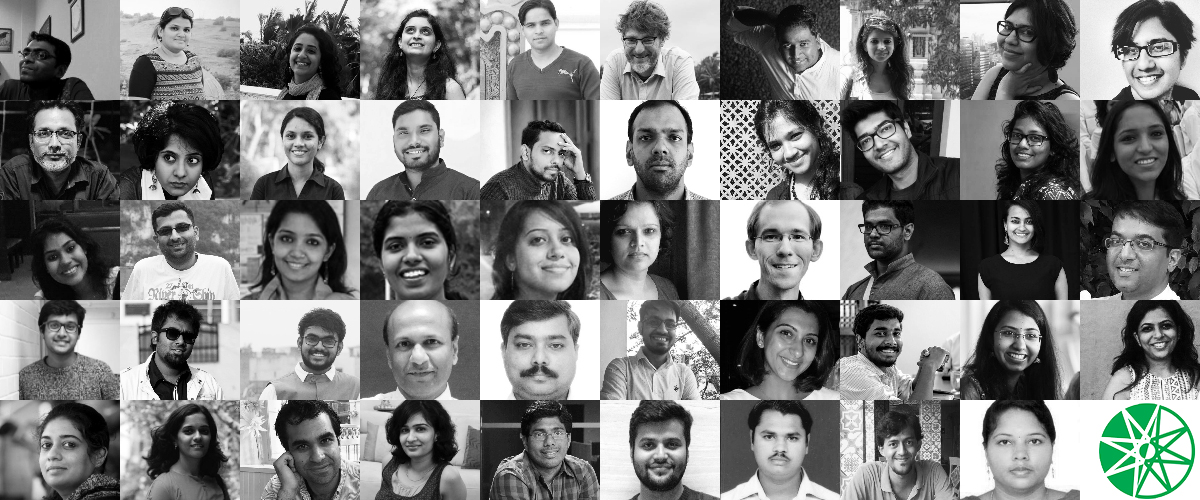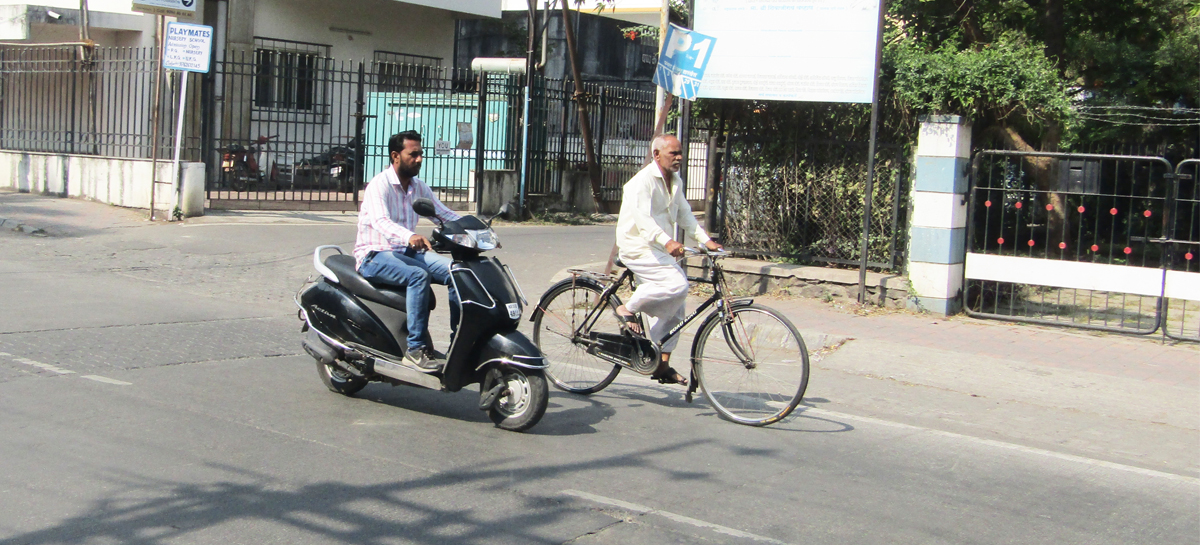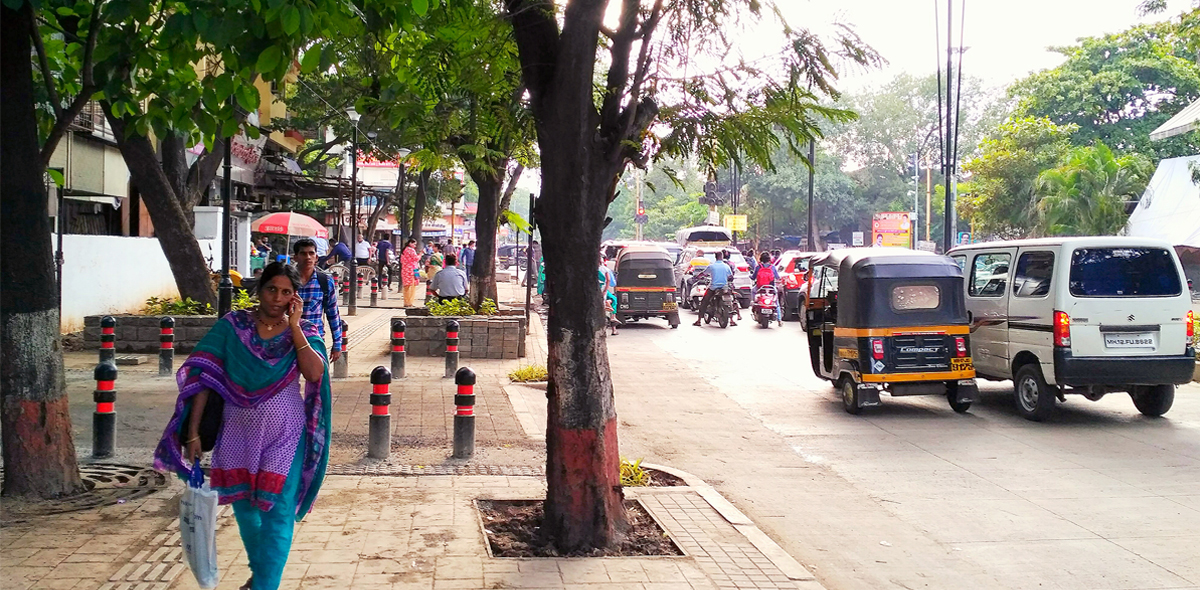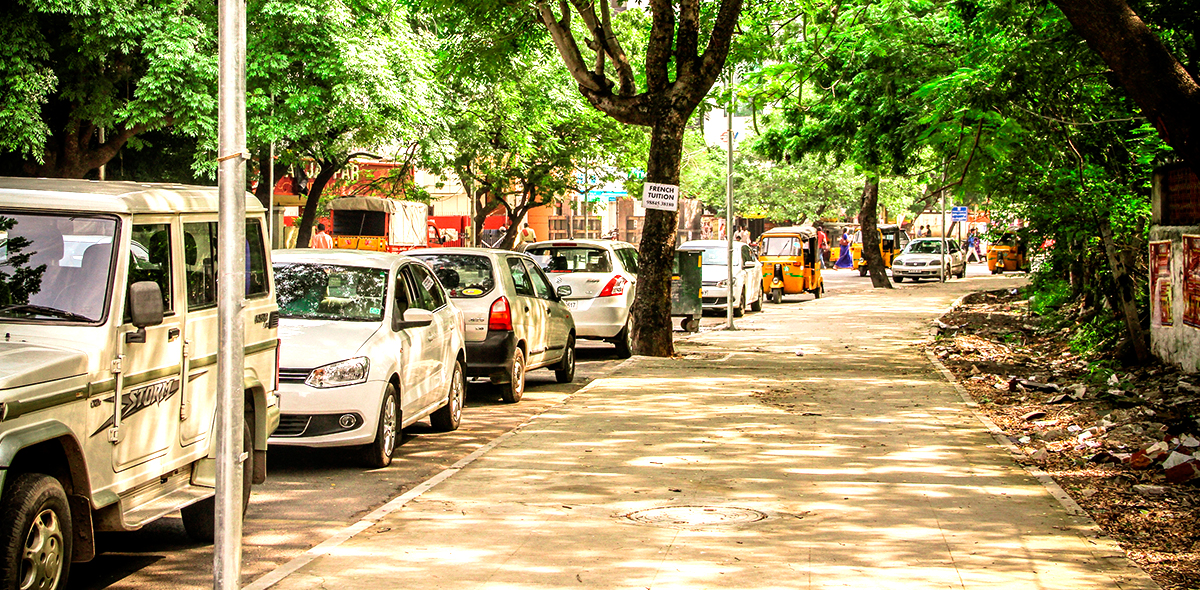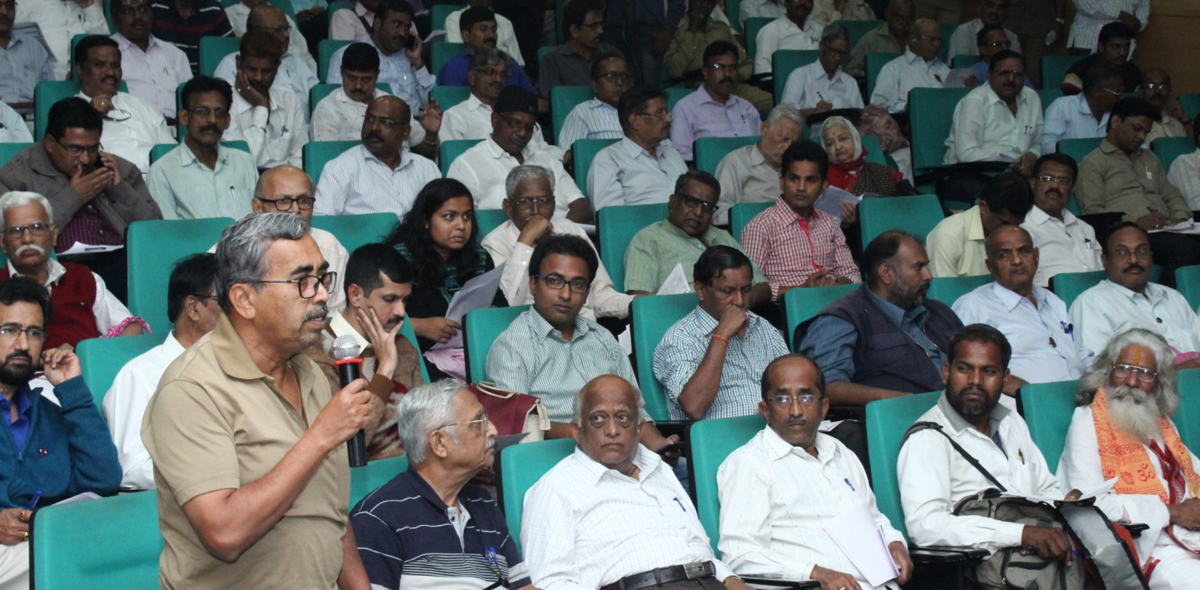If there were a city in India ready to narrate an inspiring saga of transformation of its urban mobility, Pimpri Chinchwad would undoubtedly be at the forefront. Picture Pimpri Chinchwad as the protagonist in its own journey—a courageous figure embarking on a quest to create a better city for its people by persevering to transform the way people move, the way people experience their streets, and the way it sets the foundation for resilience. Pimpri Chinchwad’s quest remains a work in progress, with much more to be accomplished, but it has started its journey with a realisation—a realisation that change is necessary for the city’s future prosperity amid rapid urbanisation, which sparks hope.
The plot: an ongoing challenge of traffic, poor air quality, and people’s safety
The plot of this storyline starts with the pressing issues of traffic congestion, declining air quality, and people’s safety, driving the necessity for change. The vehicle population of over 21 lakhs (2024) is racing to match that of humans, with projections suggesting that the city’s population has crossed 24 lakhs. Given the surge in vehicles, it comes as no surprise that in November 2023, the city’s PM 2.5 levels reached a staggering 103-121 µg/m³, well surpassing the prescribed daily average concentration limit of 60µg/m³.
Safety in terms of public health and the risk to life from road accidents was also a significant factor in changing how people move. In 2022, Pimpri Chinchwad recorded 1051 road accidents, and over 370 lost their lives in road accidents—four times higher than in 2018.
The silver lining: city leaders stepped up to initiate action
For more than a decade, these challenges have persisted, placing Pimpri Chinchwad at a perpetual crossroads where it must make a critical decision: either expand road infrastructure to accommodate the growing influx of vehicles or prioritise the safety and welfare of its residents.
In navigating this decision, a silver lining has emerged as Pimpri Chinchwad discovered a steadfast ally in its most important supporting characters—dedicated city Municipal Commissioners who have championed sustainable mobility since 2018. These city leaders embraced the pivotal role of crafting policies and implementing sustainable mobility interventions—the only way to reduce congestion, minimise emissions, and improve safety. They have done this by promoting public transport with 50 kilometres of the Rainbow Bus Rapid Transit System (BRTS), plying a fleet of over 450 electric buses, building over 100 kms of walking and cycling networks, and laying a robust foundation through policies—like a Non-motorised Transport Policy — and capacity building for the longevity of its efforts.
The rising action: the city created better infrastructure to move people
One of the earliest and most significant actions in this saga was the city leaders’ initiative to take action on the ground. In 2018, the Pimpri Chinchwad Municipal Corporation (PCMC) successfully implemented the Rainbow BRTS connecting to its twin city, Pune. The BRTS changed public transport in the region, offering commuters a reliable, efficient, and sustainable mode of travel within and between the two cities. Operated by the Pune Mahanagar Parivahan Mahamandal Limited (PMPML), this system spans four corridors, covering a distance of 50.5 km and serving 2.88 lakh passengers daily within Pimpri Chinchwad’s city limits. The city, along with PMPML, is continuing to make improvements to the system by revamping corridor intersections, installing security cameras, and upgrading the Intelligent Transportation Management System (ITMS) to boost ridership.
In addition to the BRTS, the electrification of buses serves as a pivotal turning point in the city’s storyline. It represented a moment of revelation, where the city realised the importance of embracing cleaner, more eco-friendly transport options. Between 2018 and 2019, 150 e-buses were introduced to serve the twin cities, and the fleet has since expanded to over 450, with an additional 200 in the pipeline. Over 70% of them are already operating on the BRT corridor.

Around the same time, the city realised that relying solely on public transport wasn’t enough to create a captivating saga; it needed supplementary initiatives such as walking and cycling—after all, more than 30% of the city’s trips are by walk and cycle. The city’s Urban Streetscape Programme was launched in 2018, drawing inspiration from successful models of Chennai and Pune’s street programmes to improve walking and cycling infrastructure in the city. This impact of this programme, combined with the endeavours of Smart City Ltd, resulted in over 45 km of streets being revamped with wider footpaths, safer pedestrian crossings, and landscaping—Linear Garden, Patil Street, and Nigdi Road are great examples—with an additional 65 km in progress.


Linear Garden Road designed by Prasanna Desai Architects
Additionally, Pimpri Chinchwad’s active participation in the national Streets4People and Cycles4Change Challenge, hosted by the Ministry of Housing and Urban Affairs (MOHUA), enabled them to develop innovative designs, employing a Test-Learn-Scale approach. This involved implementing tactical urbanism interventions on the ground to test out solutions and subsequently expanding successful initiatives.

Handle-bar surveys for Cycle4Change Challenge
However, as the city delved deeper into these initiatives, it became evident that these projects were not forming a connected network for pedestrian or cyclist movement which led to the inception of the ‘Harit Setu’ Masterplan, translating to ‘green connectivity.’ When implemented, it would transform the city into a 15-minute cycling-and-walking-friendly haven by enhancing existing connections and creating new green links. The pilot implementation in the Pradhikaran neighbourhood will serve as a learning experience to inform a scale-up strategy, enabling PCMC to expand walking and cycling infrastructure and transform one neighbourhood at a time.
The turning point: Pimpri Chinchwad implemented policies and strengthened the team’s capacity for resilience and expansion of its efforts
Pimpri Chinchwad recognised that while building infrastructure was vital, strategic planning for resilience and scalability was equally imperative. As the storyline progressed, Pimpri Chinchwad embedded policies to ensure stability and consistency in planning and decision-making to safeguard these initiatives against changes in leadership or priorities.
As part of this effort, the city has begun addressing the significant challenge of managing on-street parking, which has been a major concern. The city remains dedicated to enhancing parking solutions through area-level plans and establishing a robust institutional framework. They collaborated with consultants to conduct comprehensive studies, serving as the foundation for the Parking Policy adopted in 2018. The city is looking to revise the policy in 2024 based on their learnings from parking management experience to date and make enforcement more stringent.
In 2022, they also adopted a Non-motorised Transport (NMT) Policy to achieve a target of 90% of trips made by public transport, walking, or cycling by 2036. The policy focuses on creating a safe, seamless, and pleasant network of top-notch infrastructure for walking and cycling in the city. It also goes beyond infrastructure development to integrate sustainable environmental planning and utility management to boost quality of life, spur economic growth, and preserve ecological well-being.

Adoption of Pimpri-Chinchwad’s Non-Motorised Transport Policy
The city needed internal capacity, skills, and expertise to implement policies and projects effectively, hence, investing in team development became crucial. In 2017, PCMC organised workshops and site visits to enhance skills and knowledge. Recently, city officials and engineers involved in mobility projects have pursued Masters programs in transport planning, completed national road safety audit courses, and participated in certified programs to build expertise further.
A twist in the plot: financing sustainable mobility projects
In Pimpri Chinchwad’s story, a pivotal plot twist arises, revealing a significant gap in financing for sustainable mobility projects. A staggering 58% of the total allocated transport budget of 1168 cr in 2024-25 was earmarked for vehicle-centric projects, such as grade separators and road development, which offer temporary remedies to congestion but exacerbate the problem in the long term. Consequently, just 5% (110 km) of PCMC’s streets have been transformed thus far. To meet the ambitious targets outlined in its NMT Policy, PCMC must strive to implement a minimum of 25 km of better streets every year until 2035, which requires an annual investment of 200-250 crore solely for street development.
Additionally, there is an urgent need to increase the number of buses, as the current ratio of 31 buses per lakh population falls short of the desired benchmark of 60 buses per lakh population set up by MoHUA. PMPML currently operates a fleet of 2,200 buses, while the benchmark suggests a fleet of 5,200 buses is necessary. Out of this, Pune requires 2,700 buses, PCMC requires 1,800 buses, and the Metropolitan Region outside both Municipal limits requires 700 buses. To address this demand, PCMC requires an investment of approximately 930 crore, solely for bus fleet augmentation.

Shortfall of buses in Pimpri-Chinchwad
Presently, PCMC allocates 495 crore to street initiatives and public transport combined. While this falls short of the funds needed for street and public transport projects, it is a 100% increase in the funds allocated for such projects compared to the 2023-2024 budget. Amidst these challenges, PCMC is actively exploring diverse funding avenues, including the Smart Cities Mission, municipal bonds, and funding through development banks, in a concentrated effort to secure the necessary resources for its initiatives.
The climax
PCMC acknowledges the funding shortfall for sustainable projects but is working towards establishing a strong foundation to scale up efforts. It is initiating a Sustainability Cell to prioritise innovative and sustainable approaches in city planning, alongside the establishment of an Urban Mobility Department to consolidate mobility-related efforts. This initiative aims to enhance coordination within PCMC departments, and include various civil society organisations (CSOs) and experts to streamline collaboration.
The city has become a model of collaboration, working with CSOs and community groups to lead the shift towards sustainable mobility. It recognises that meaningful change requires involvement from all stakeholders sharing a common vision.
In conclusion, Pimpri Chinchwad’s tale is not just one of transformation—it embodies perseverance and resilience. With sustained efforts, the city is witnessing the results of its hard work. The city was recognised as one of the top 11 cities in the C4C and S4P challenge, as well as being selected as one of the 10 cities for the Bloomberg Initiative for Cycling Infrastructure (BICI). Instead of pausing, Pimpri Chinchwad is intensifying its commitment, evaluating the impact of initiatives like street assessments, and amplifying successful strategies. This forward-thinking approach reaffirms the city’s dedication to progress and prosperity, setting a promising course for its future.
Written by Kashmira Dubash
Technical inputs from Pranjal Kulkarni and Rutuja Nivate





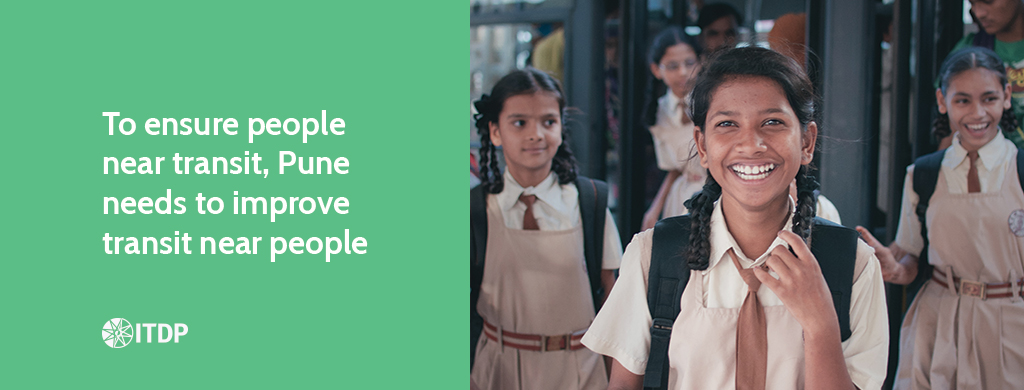





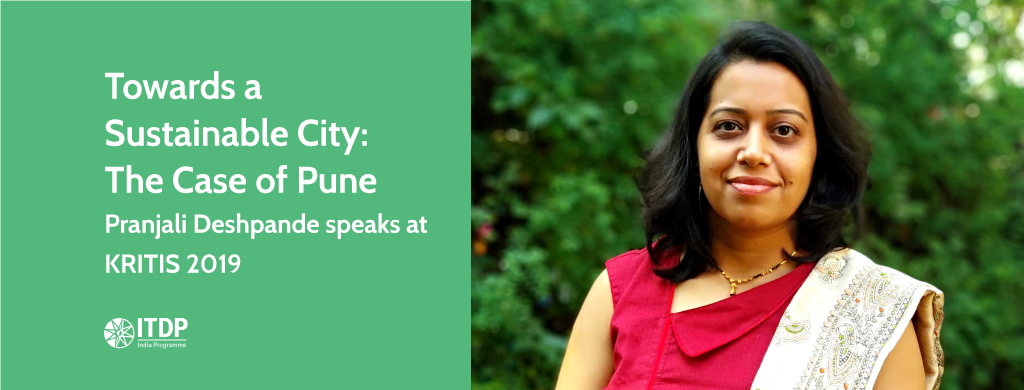
 JM Road, Pune
JM Road, Pune